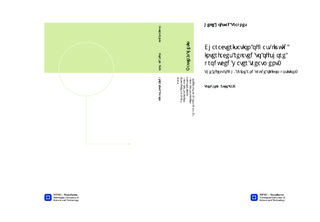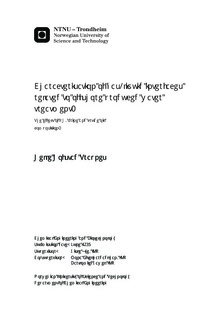| dc.contributor.advisor | Oye, Gisle | nb_NO |
| dc.contributor.advisor | Eftekhardadkhan, Mona | nb_NO |
| dc.contributor.advisor | Gawel, Bartlomiej | nb_NO |
| dc.contributor.author | Trapnes, Helle Hofstad | nb_NO |
| dc.date.accessioned | 2014-12-19T13:24:04Z | |
| dc.date.available | 2014-12-19T13:24:04Z | |
| dc.date.created | 2013-09-19 | nb_NO |
| dc.date.issued | 2013 | nb_NO |
| dc.identifier | 649689 | nb_NO |
| dc.identifier | ntnudaim:9648 | nb_NO |
| dc.identifier.uri | http://hdl.handle.net/11250/248471 | |
| dc.description.abstract | Produced water is water co-produced with oil and gas during petroleum production. It is a very complex mixture and contains different compounds that can have negative impact on the environments. It is therefore important that the hazardous constituents are removed from the produced water in order to comply with the environmental regulations that the governments require. As the fields mature the amount of produced water will increase and it is thus crucial to handle this by-product efficiently. The produced water is either re-injected into the reservoir or discharged to the sea. There exist several techniques for separating the oil and the water and one common method is gas flotation, where dispersed oil and particles adhere to rising gas bubbles. The efficiency of this method is largely dependent on the spreading coefficient which needs to be positive to achieve effective gas flotation. The aim of this study was therefore to investigate the surface tension between produced water and gas bubbles at short time scales. The produced water was prepared with various crude oils, various brine compositions and various pH values and the effect of these parameters on the surface tension were studied. The produced water samples were prepared by mixing crude oil and brine and then separating the two phases. Three different crude oils and three different brines in addition to pure water with various pH values were used. The surface tension of the samples was measured by a bubble pressure tensiometer (BP 100) and it was found that the changes in surface tension were largely dependent on the crude oil composition. The produced water samples made with crude oil I had most influence on surface tension at high pH values whereas the change in brine composition did not seem to influence the surface tension significantly. The samples made with crude oil B had similar effect on the surface tension regardless of the pH and composition of the brine. This indicates that other surface active compounds than acids and bases contribute to the change in surface tension. The samples made with crude oil F did not show any obvious trend regarding the surface tension for the various pH values and brine composition and the reason for this is not clear. In addition to surface tension measurements the samples were analyzed with the UV-visible spectroscopy method to get an indication of the concentration and type of compounds that was present in the produced water samples. Two samples were also measured with the IR spectroscopy method to get more information about the contents of the samples. There should be done more IR analysis and also other analysis like TOC to get more information about the contents of the produced water samples in the future. | nb_NO |
| dc.language | eng | nb_NO |
| dc.publisher | Institutt for kjemisk prosessteknologi | nb_NO |
| dc.title | Characterisation of gas-liquid interfaces related to offshore produced water treatment.: The effect of pH, brine and crude oil composition. | nb_NO |
| dc.type | Master thesis | nb_NO |
| dc.source.pagenumber | 86 | nb_NO |
| dc.contributor.department | Norges teknisk-naturvitenskapelige universitet, Fakultet for naturvitenskap og teknologi, Institutt for kjemisk prosessteknologi | nb_NO |

